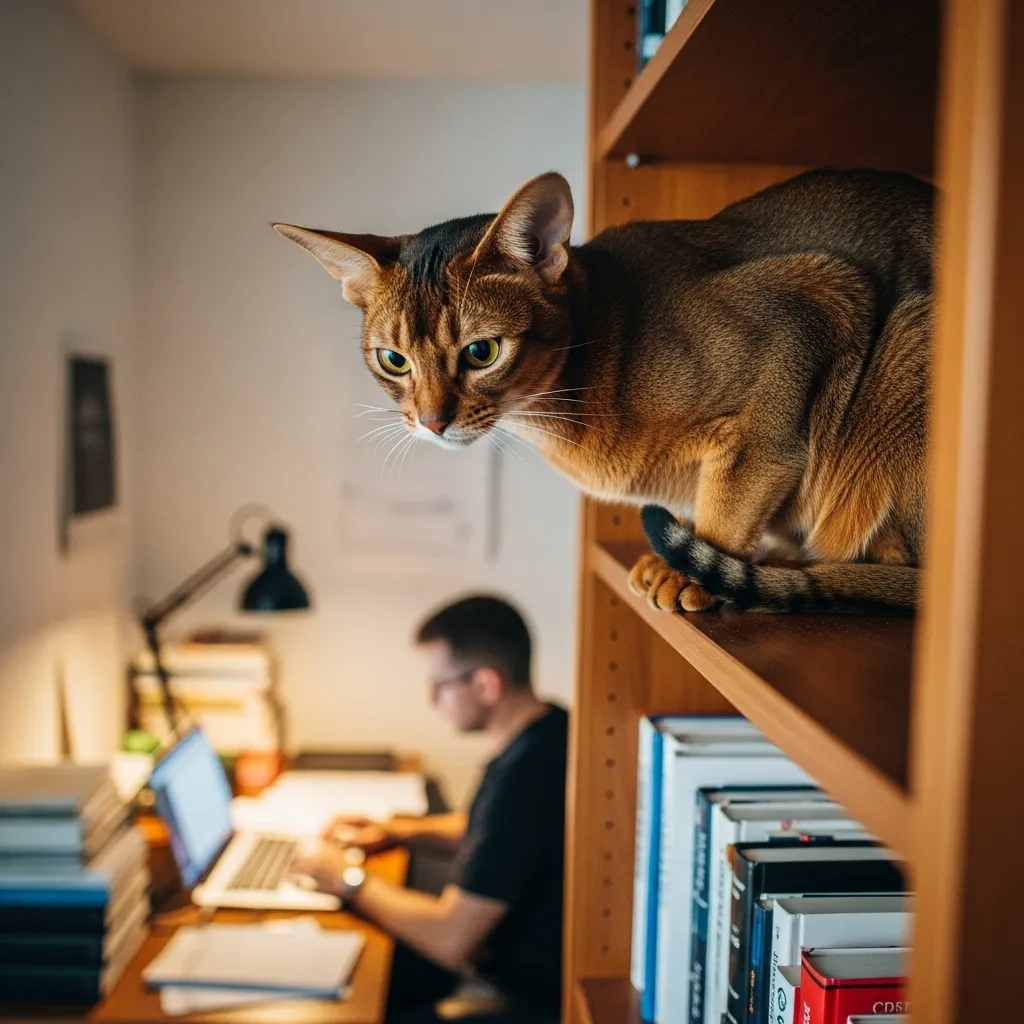
1. The Abyssinian: The Adventurous Companion
If you imagine a cat with the energy and curiosity of a Border Collie, you’re picturing the Abyssinian. Sleek, athletic, and brilliantly intelligent, this breed is anything but a couch potato. Abyssinians, or “Abys,” are one of the oldest known cat breeds, and their zest for life is contagious. They are not typically lap cats in the traditional sense; they’d much rather be “helping” you with your tasks, exploring high shelves, or figuring out how to open a cabinet. Their loyalty is profound, but it’s expressed through shared activities and constant companionship rather than quiet cuddles.
Personality and Temperament
Abyssinians are the extroverts of the cat world. They are intensely curious and need to be involved in everything you do, from making coffee in the morning to typing at your computer. This makes them wonderful companions for active households. They bond deeply with their families and can become depressed if left alone for too long without stimulation. Their intelligence is remarkable, making them highly trainable. Many Abys owners successfully teach their cats to fetch, walk on a leash, and even run agility courses.
Energy and Enrichment Needs
This is not a low-maintenance breed when it comes to mental and physical exercise. An under-stimulated Aby can become mischievous. To keep them happy, you must provide ample enrichment. Enrichment refers to activities that stimulate an animal’s natural behaviors, like hunting and exploring, which prevents boredom and stress.
Daily enrichment for an Abyssinian should include puzzle feeders that make them work for their food, vertical spaces like cat trees and shelves for climbing, and at least two 15-minute sessions of interactive playtime with wand toys. Their trainability also makes them excellent candidates for positive reinforcement training. This humane training method uses rewards (like treats or praise) to encourage desired behaviors. For example, you can teach an Aby to “sit” using a simple technique.
Mini-Example: Teaching “Sit” with Positive Reinforcement
Start with a high-value treat your cat loves. Hold the treat just above your Aby’s head and slightly behind their eyes. As their head tilts up to follow the treat, their rear end will naturally lower into a sitting position. The moment their bottom touches the floor, say “Yes!” or use a clicker, and immediately give them the treat. Keep sessions short—just two or three minutes at a time—and always end on a positive note. With consistency, your Aby will associate the action with the reward.
Grooming and Health Basics
The Abyssinian’s short, ticked coat is relatively low-maintenance, requiring only a weekly brushing to remove loose hair. They are generally a healthy breed but can be prone to certain genetic conditions, including pyruvate kinase deficiency (a type of anemia) and progressive retinal atrophy (which can lead to blindness). Responsible breeders will screen for these conditions. Regular check-ups with your veterinarian are essential for preventive care, as recommended by organizations like the American Animal Hospital Association (AAHA).
Living with an Abyssinian
An Abyssinian is a great fit for an active family, a couple, or a single person who is home often and wants an engaging, interactive pet. They generally get along well with other cats and cat-friendly dogs, especially when introduced properly and given their own space. They are less suitable for someone seeking a quiet, placid lap cat. Their constant need for mental stimulation means they thrive with owners who enjoy training and playing with their pets daily.














